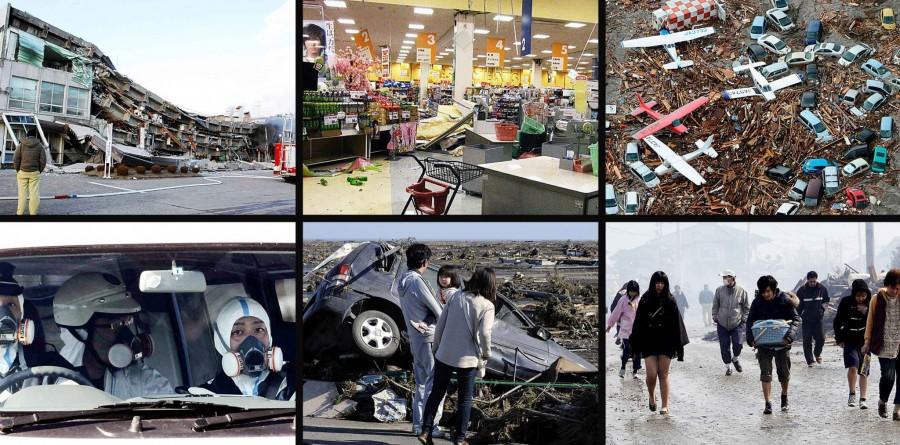The Japanese earthquake/tsunami disaster has been seen through extensive, nighttime news coverage on TV as well as loads of resources online. As people pray for loved ones living in close proximity to the destruction, the current information about this tragedy can ultimately be broken into six basic components.
Initial earthquake
Although the tremor at 2:46pm started in a comparable way to the numerous earthquakes that occur in Japan every month, this shaking lasted especially long, around two minutes, and gradually increased in severity as it continued. Ryan McDonald, a CNN reporter who captured footage of his home swaying back and forth on its stilts, explained, “It usually stops but it got considerably worse.” It seems that the quake was so strong that it has shifted the Japan’s main island four feet. Overall, the earthquake has been deemed the seventh most power in the world’s history.
Never-ending Aftershocks
After the 8.9 magnitude earthquake had ended, the wreckage had only just begun. Over 150 smaller aftershock waves continued to hit Japan throughout the first 24 hours, slowly decreasing in rigor but still with magnitudes of over 5.0. These aftershocks continue to hit and strike fear in the people, and after the worst is over they could continue more scarcely for over a month.
Wall of Water
With only a five-minute warning to the civilians of Japan, a 30-foot tsunami stuck the coast, adding to the destruction of the earthquake. This large wave, which traveled about six miles inland, wiped out homes, cars, and other structure which stood in its path. Luckily, many people were able to remain safe in the Japanese buildings designed for such disaster, with strong stilts holding the structures above the rushing water below.
Nuclear Meltdown
Nuclear issues, causing widespread fear among the Japanese people in close proximity to the plant, have drastically changed since late last night. After the power had gone out and the fission process ceased, the workers at the plant were having trouble cooling its reactors and were worried that the heat pressure building up could cause the building to blow. Although these reactors are still being worked on, the bigger issue is the failed pumping system. At about 3:30pm on Saturday, the concrete walls of one building exploded do to this pumping system and released radioactive Cesium into the air. This is not an immediate danger to the lives of the people, but it has greatly increased the evacuation radius.
Survivor location through the web
As survivors hunt for their loved ones in the expanse of debris, social networking sites play quite a large role in locating the missing. Over half of the population of Minamisanriku has been declared missing with 9,500 people unaccounted for, leading them to rely on countless rescue forces along with the power of the web. Though most of the hardest hit regions are at a loss of power, many occupants of upright homes have retained computer resources such as Facebook and Twitter. These websites are immensely important because of the many unconscious or disoriented people in Japan, who are thought to be dead by family and friends. Google has opened its widely viewed pages to links of live updates posted on social networking sites, through Google Crisis Response, so that they may contribute to the effort as well.
Extreme Destruction
As the death toll continues to grow, people are still being rescued by helicopter. Many are still missing, and accounted for survivors are trying to live out the rest of the tragedy as many of them sleep in large groups. “Nothing prepares anyone for this,” said Anderson Cooper. Many countries around the world are quickly sending supplies to the Japanese in need, including the United States government and the American Red Cross. Piers Morgan on CNN exclaimed, “The whole world is watching this with lots of horror.”


